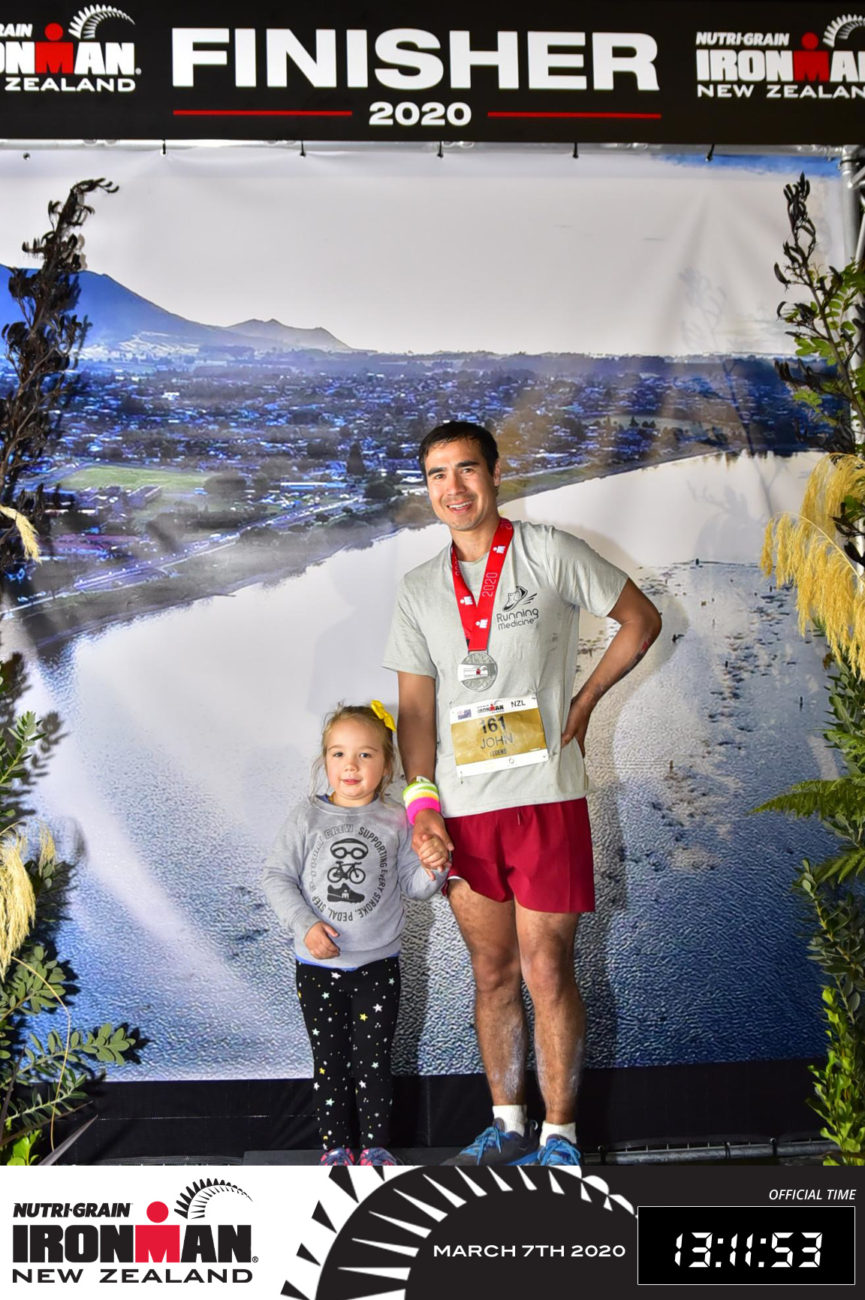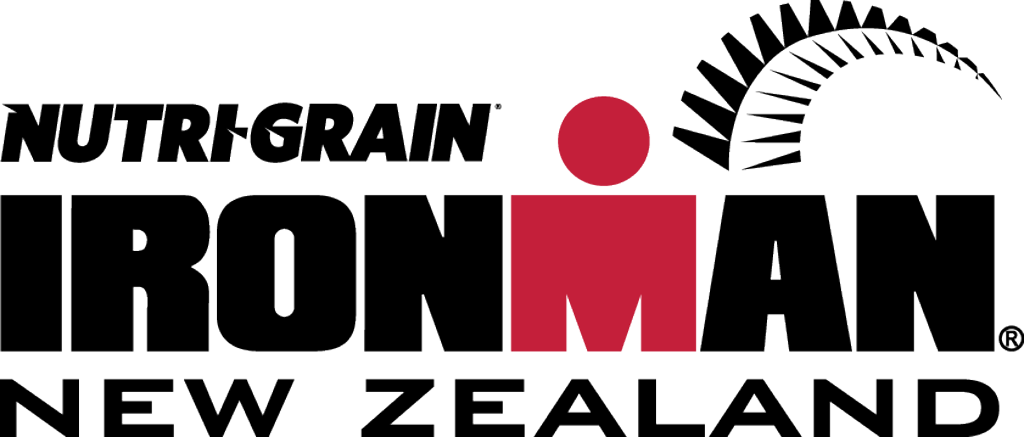
Ironman New Zealand 2020:
Ironman # 13
Date:
March 07, 2020I did my first Ironman triathlon in 2007 when I was 24 years of age which is generally considered ‘young’ for a recreational Ironman. Since then, I’ve completed one a year so the 2020 NZ Ironman was my 13th edition at the maturing age of 37. Interestingly, the 35-39 and 40-44 age groups are the most common age groups for Ironman participation worldwide. Understandably, lifestyle wise, a lot has changed since my first Ironman. In 2007 I was a first year House Officer at Rotorua Public Hospital. I was not married, had no dependents, and minimal responsibilities outside of work. Training for my first Ironman started getting serious from about eight months prior to the event. Fast forward 13 years and I’m a specialist Sport & Exercise Physician who is married with two children and two dogs. Specific training this year started three months before the event. This would be considered blasphemy in certain Ironman training groups. However, my goal has always been to do one Ironman a year and the focus has simply been on getting to the start line. The implied task being that I need to do enough ground work to treat the start line with respect. So, on the morning of the 7th of March 2020, I wake up at 5.30am to the most effective alarm clock known to young families. My 18 month child, Poppi, is climbing over my face. I sense that she is enjoying this process by her sporadic giggling. As I’m not engaging in her play, the natural progression is that my nose gets pulled. When that fails to elicit a response, her fingernails dig into my eyelids. Meditation is for the childless. I succumb and wake up to fatherhood and the ensuing Ironman. The rest of the morning then revolves around facilitating the most important process for any Ironman triathlete before the swim start – complete bowel evacuation before you put on your wet suit. Once you’ve put on your tight and uncompliant wet suit (often with the assistance of another per), there is no turning back. It’s just before 8am and I’m walking in the shallow water towards the open water swim start. I know I won’t finish until around 9pm so there is trepidation. I move closer towards the deep end. You just need to be courageous for a few steps.
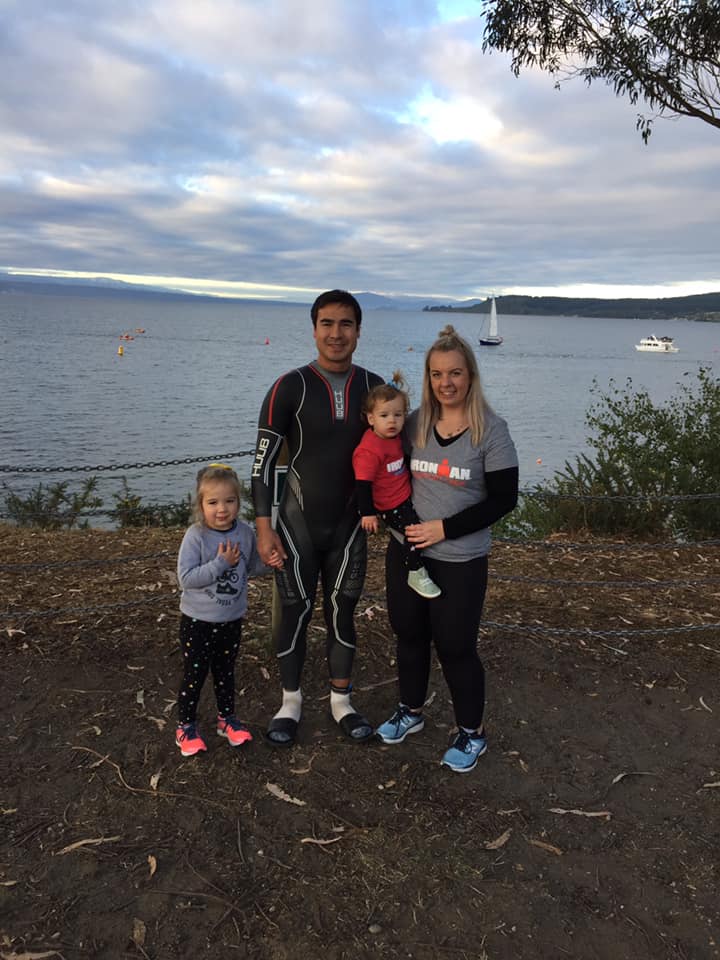
Just before the swim start with my family: Millie (left), Poppi (centre), and Courtney (right)
I’ve wanted to talk about ‘healthy aging’ for a while. A lot of the ‘injuries’ I see in clinic are related to ‘aging athletes’ or deconditioning. Although we are living longer, we are not aging less. And this process occurs earlier than a lot of people appreciate. We do not suddenly wake up one morning with grey hair and a walking stick. We do not suddenly go from 30 to 65 years of age and feel old. Aging is a process. And this process starts from our late 20s (if not younger). If you develop an ‘injury’ without a clear mechanism or significant trauma, you may be presenting with a symptom of the aging process. To elaborate, we reach our peak bone density in our early 20s. We start losing muscle strength and muscle fibre size from our late 20s (i.e. age-related sarcopenia). The capacity of our joints to absorb and dissipate load reduces from our 30s. Our aerobic capacity declines by about 1% a year from the age of 30 i.e. 10% per decade from 30. Ask yourself, how many All Blacks compete at a high level from 35 years? When I completed my first Ironman aged 24, I was in my physical prime. My lifestyle was also more conducive for this arguably selfish exercise pursuit. I had more time to train and more time to recover. Why is it then, that the majority of Ironman triathlete participants (not winners) are between 35 and 44 years of age when they are well past their physical prime? Social reasons aside, there are two main factors from a Sport and Exercise Physician perspective. The first is that we have the ability in endurance sports to exercise at a submaximal level for a prolonged period of time. For example, we can maintain a pace at 60-80% of our VO2 max and still do quite well in endurance events until our 60s. And the second is, with age, we have banked more ‘mental resilience’ (or tolerance to suffer) through our life experiences. Therefore, although I may not be physically stronger at 37. To compensate, I have become mentally stronger. The key message I wish to get across is that if you continue to exercise from 30 years of age, you can slow down the aging process! Those who continue to exercise can minimise their aerobic capacity decline to 0.5% per year or 5% per decade (i.e. compared to 1% per year or 10% per decade in non exercisers). Those who continue to resistance train can maintain their muscle strength to better support their joints. Those who continue to do flexibility/recovery sessions can maintain musculotendinous compliance to better absorb load through their joints. For those over 30 years of age, it is not ok to exercise less with each passing decade. If you are sedentary between the ages of 30 and 60, then expect to accumulate a weakness debt and the side effects of normal age related deconditioning. Be prepared to incur an ‘injury’ with the same day to day activities that would’ve never troubled you in your 20s. Exercise needs to be challenging with an element of difficulty. Because when exercise is no longer hard, invariably, ‘life’ becomes hard. Conversely, if you are still exercising intensely in your 40s or playing a ‘high demand sport’ (i.e. any collision or change of direction sport), be prepared to put in the hard yards. You must commit to dedicated aerobic, resistance, flexibility, balance, and recovery sessions in order to condition your body to handle the rigours of your sport. You need to tick all the right boxes and maintain a healthy weight. Your conditioning needs to be superb if you want to keep playing any high demand sport. You can’t afford to be mediocre. Or else, (no surprises here folks), you’ll get ‘injured’. There’s a difference between aging and healthy aging. The choice is yours.
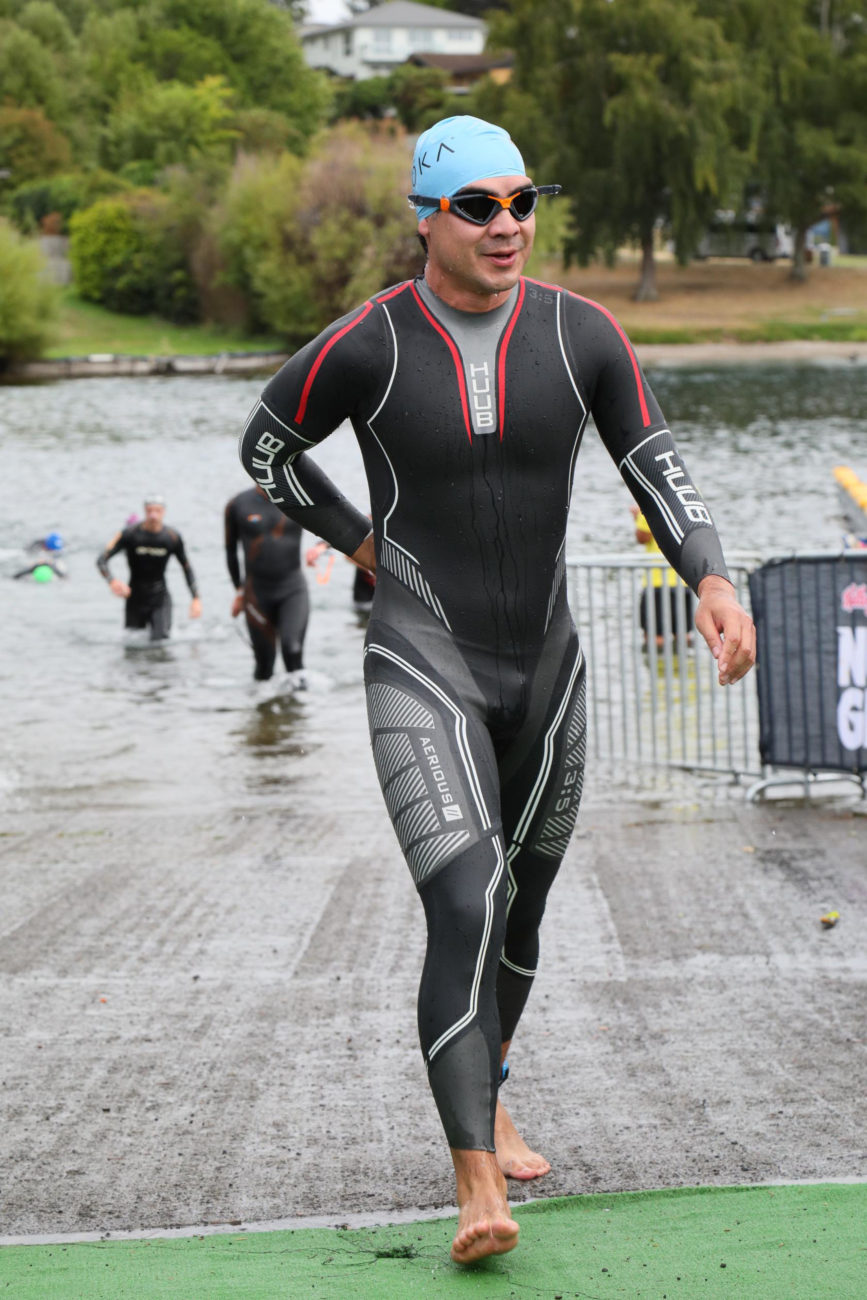
Swim completed and heading towards the bike transition area
The weather gods are kind today and Lake Taupo is relatively flat with minimal chop. I’m not that keen for a fight this early in the morning so I keep my ego in check and start towards the back of the pack. Away from all the carnage up front, I establish a good breathing rhythm and ease into my work. The sunrise, sandy lake floor, golf balls, and lake weed are a refreshing break from the ‘black line’ of the swimming pool. The swim is my weakest discipline so I’m happy to complete the 3.8km swim in 1hr and 25 mins. It’s all a blur of spectators and a commotion of noise as I come out of the water and head towards bike transition in preparation for the gruelling 180km bike ride. Although the bike is my least favourite discipline, I attempted to adopt a gratitude mindset this year. I was thankful for the overcast conditions and light winds which made for favourable biking conditions. I was thankful to be in the moment and to literally have hours to myself away from the demands of parenting. At the same time, I was also determined to push hard as I wanted to finish before my four year old daughter went to bed and bizarrely, resume parenting (or contribute anyway). The parenting guilt seemed to motivate me and I managed to maintain a good pace throughout only stopping at halfway for an ice cold Powerade and two mince savouries. Unbeknown at the time, I had biked my fastest ever Ironman bike split at just over 6hrs 20 mins. Now that the hard part was finished, I was just left with the marathon…
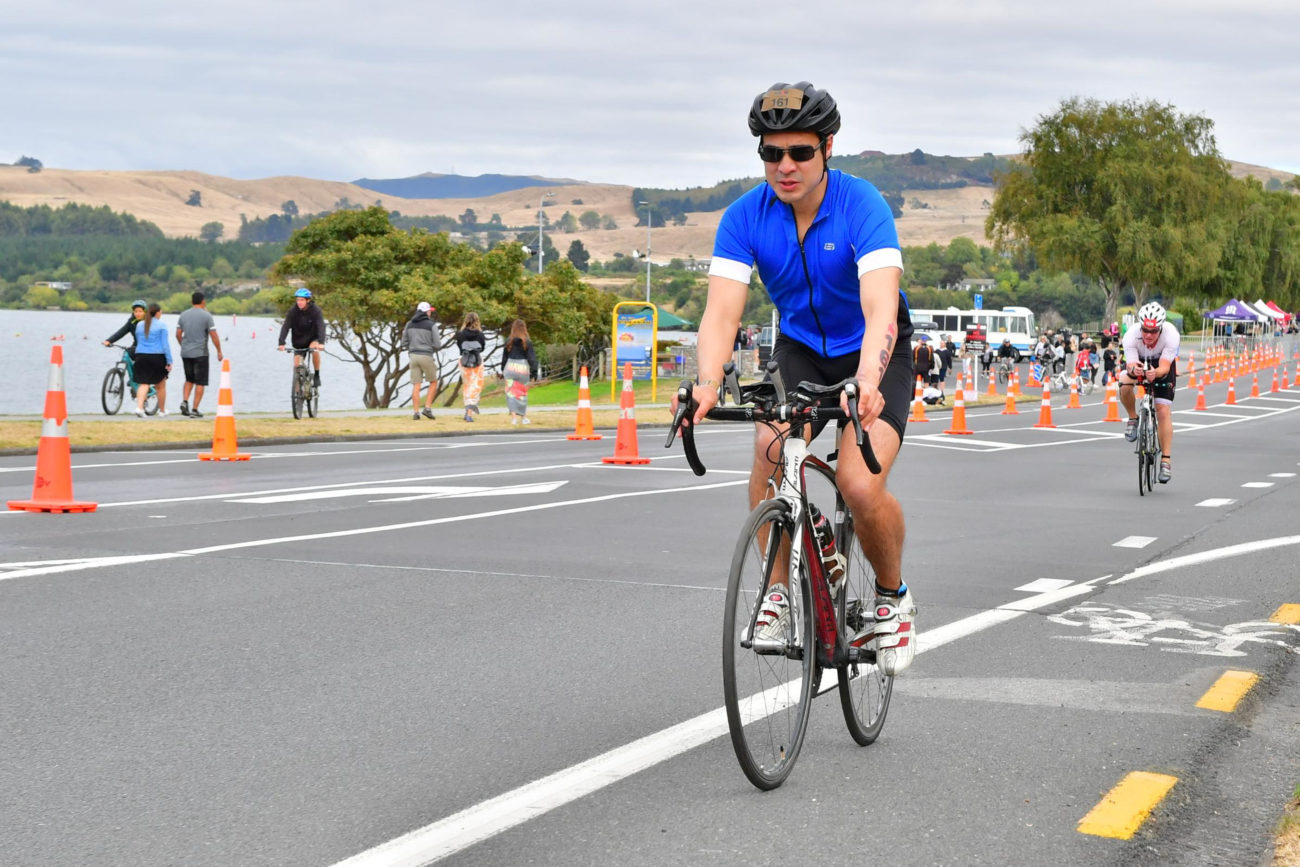
Heading out of Taupo on the bike
Although I have a reasonably strong running background, the marathon part of the Ironman is one of the hardest marathons you could ever run. Being a runner at heart, I try limit my walking but the temptation to walk is great. In no other event in my experience is the compulsion to stop running as high as it is during an Ironman marathon. The next 42.2km is an absorbing battle between the willingness to move and the compulsion to stop. This struggle of wills is a life changing experience (in retrospect) and is probably one of the main reasons people like myself willingly come back year after year. I leave the run transition well lubricated and with the knowledge that I just need to maintain an honest pace to achieve a personal best time. The first lap (of three) of the marathon course is always the hardest. This is usually due to a combination of 180km of bike fatigue, heat, and being passed by other faster runners on their final lap home. With a PB on the line, I know I need to mentally hold it all together and keep pushing until sunset. As the sun sets, the air begins to cool and running becomes a bit more tolerable. Willed on by my family and many, many, complete strangers, I approach the finish line a touch over 9pm and just under a 5hr marathon time. Heading down the finisher’s chute, I spot my four year old, Millie, who is still awake and waiting for me. I resume parenting and she joins me for the last 100m. We finish together laughing hand in hand. I manage to achieve a PB of 13 hours and 11 mins but the greater satisfaction is having trained and finished an Ironman as a father. My last personal best was in 2009 when I was 26 years of age so you really can wind back the years (even as a parent)! An Ironman is not about how fast you can go, but more about, the less you slow down. Sounds a bit like life doesn’t it? Aim for healthy aging. Aim to exercise deep into your living years. Running is medicine. Join me at my next blog, the Mt Oxford Mountain Marathon in April (Coronavirus pending).
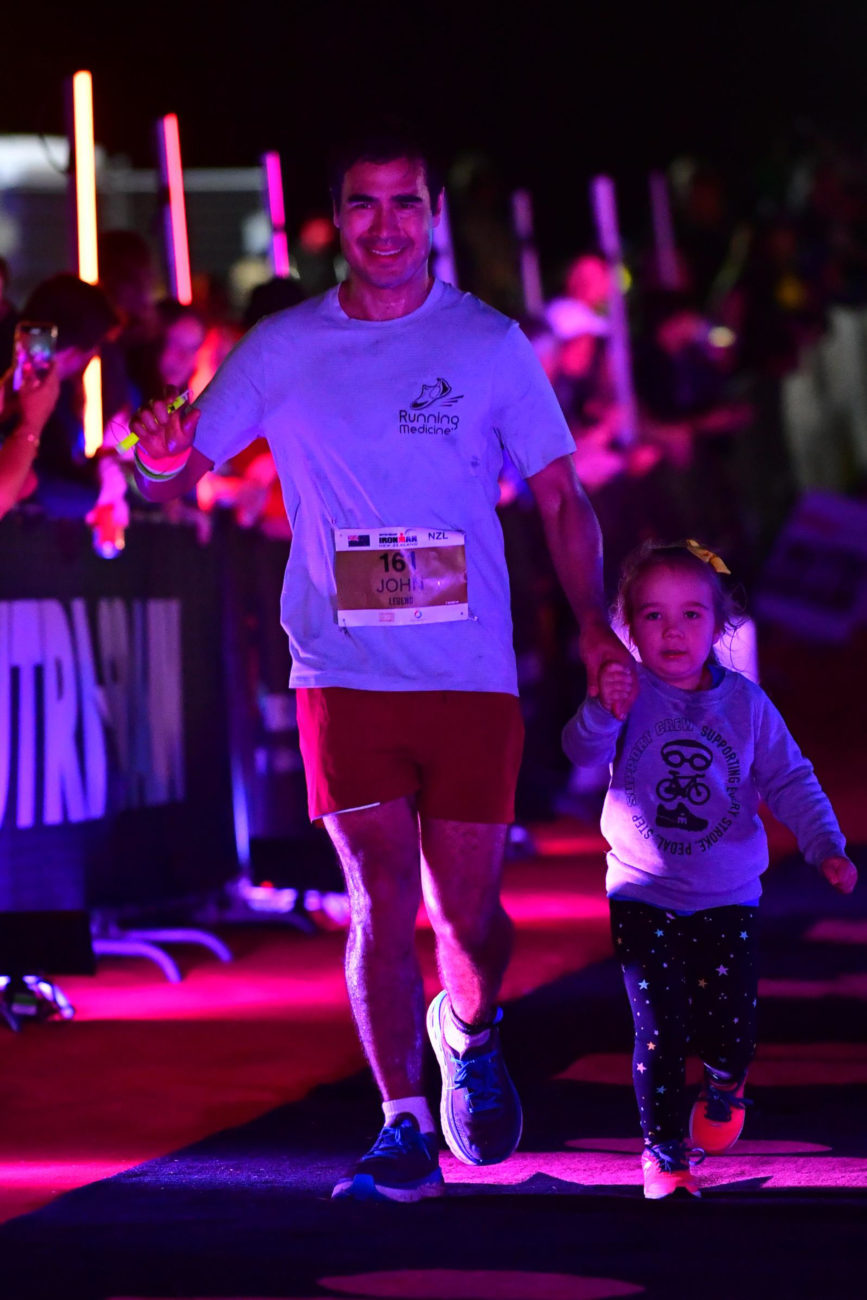
Heading down the finisher’s chute with Millie
As soon as you feel too old to do a thing, do it!
Margaret Deland, American author
